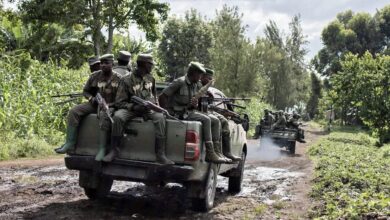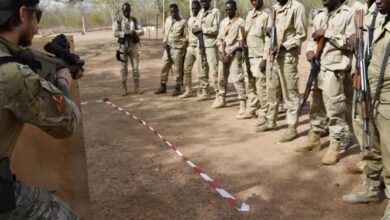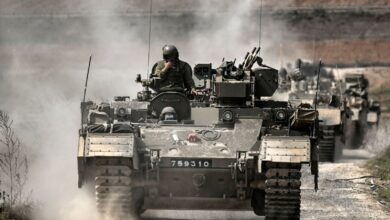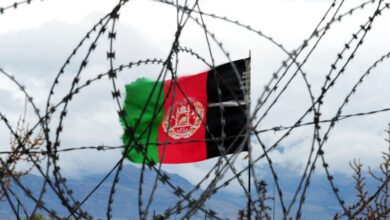Northern Ireland police believe New IRA planted mortar in Strabane
Police in Northern Ireland said the dissident Irish republican group known as the New IRA was likely to blame for a horizontal mortar found over the weekend in the border town of Strabane.
Around 80 Police Service of Northern Ireland officers and explosive detection dogs were carrying out searches in the Creggan housing estate in nearby Derry city on Monday, September 9.
The improvised device was discovered early Saturday near the police station in a residential area of Strabane in County Tyrone, less than a mile from the border between Northern Ireland and Ireland.
“It is our assessment that the New IRA is responsible for the mortar device that was discovered outside homes in Church View Close in Strabane on Saturday morning,” PSNI District Commander Superintendent Gordon McCalmon said on Monday.
“The New IRA members behind this attack are living in the community. They are building bombs and storing weapons and placing the community at risk,” he said.
Detective Inspector Andrew Hamlin said the device had been intended to target police officers but could have killed or seriously injured anyone in the vicinity.
A 33-year-old man was arrested on Saturday in connection with the investigation, and police said they were linking the device to the hijacking on Friday of a pizza delivery driver’s car in the city.
Police in Northern Ireland and Ireland have said that a return to a hard border on the island after Brexit could result in an increase in attacks by militant groups.
Last month police escaped injury when a device exploded near Newtownbutler about 55 miles (88 km) south of Strabane, and about a mile from two separate border crossings. Police had been called to the Wattle Bridge area of County Fermanagh over a hoax bomb and were investigating it when a second device detonated.
Deputy Chief Constable Stephen Martin said two dissident Irish republican groups, the New IRA and the Continuity IRA, “would be a very good starting point for the investigation” into the Wattle Bridge explosion.
The Continuity IRA is believed to be responsible for another bomb in Craigavon in County Armagh on July 26.
In that incident, the Irish News received a telephone call claiming that a “horizontal mortar was fired at a passed police patrol” on the Tullygally Road but had “missed its target,” and that left “a warhead in the vicinity.”
Police later discovered what appeared to be a horizontal mortar that had been fired, but on examination, a viable booby-trap bomb was found hidden inside a concrete block beside a metal tube.
The 1998 Good Friday or Belfast Agreement ended what is known as The Troubles, three decades of violence in Northern Ireland beginning in the late 1960s in which more than 3,500 people were killed, the majority by predominantly Catholic Irish republicans who want the reunification of Ireland, but also by mainly Protestant loyalists who want Northern Ireland to remain part of the United Kingdom, as well as by the security forces.
The violence also spilled over into Ireland, the United Kingdom mainland, and Europe.
The Provisional Irish Republican Army called a final ceasefire in 1997 and announced an end to its armed campaign in 2005, stating that it would seek to achieve its aims through peaceful political means. Various dissident Irish republican groups opposed to the peace process split from the Provisionals and continued to use the name IRA, and there have been sporadic violent incidents since the 1998 Good Friday agreement.
The largest dissident grouping, known as the New IRA, has been increasingly active in recent months.
Using a recognized codeword, the New IRA claimed responsibility for putting an explosive device under a police officer’s car in Belfast on June 1.
The New IRA on April 23 admitted shooting to death journalist Lyra McKee during rioting in the northwestern city of Derry. McKee was shot on April 18 by an unknown gunman who was firing at police in the Creggan area of Derry, also known as Londonderry. She later died from her injuries in hospital.
In January, a car bomb exploded outside a courthouse in Derry, an attack also blamed on the New IRA.
Since then, a number of weapons caches have been uncovered in the southeast of Northern Ireland and just across the border in Ireland.
Dissident Irish republicans have also taken credit for a series of explosive devices sent to Great Britain in March, with the New IRA claiming they sent four mail bombs that were recovered in London and Glasgow. A fifth “viable device” was discovered at the National Returns Letter Centre in Limerick after it had been returned by the postal service from the United Kingdom.












2 Comments